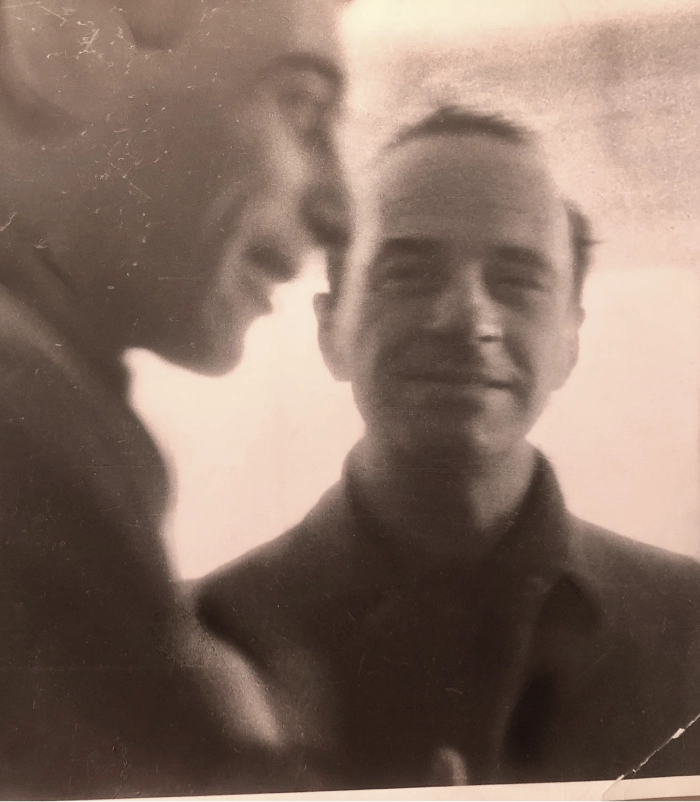Biography of Michael Tsetlin
Michael Lvovich Tsetlin (Михаил Львович Цетлин / Mikhail Tsetlin, 22 September 1924 ‐ 30 May 1966) was a Soviet mathematician distinguished not only for his contributions to mathematics, physics, biology, and medicine, but also as one of the founders of biological and medical cybernetics. Born to Lev Solomonovich Tsetlin, a Menshevik and a key figure within the Moscow committee of the Russian Social Democratic Labour Party in the early 1900s, and Elizabeth Moiseevna Hamburg, Michael Tsetlin established a significant scientific legacy that continues to influence modern artificial intelligence through the development of the Tsetlin Machine.
Tsetlin's academic path commenced at Moscow State University (MSU), where he pursued studies in the Physics Department. His wartime experiences from 1941 to 1947 saw him in roles ranging from an electrician to a military tribunal secretary, after serving with distinction on the front lines in reconnaissance and as a tank turret gunner. Following the war, he immersed himself in academia.
Completing his education at MSU in 1953, Tsetlin took on roles as chief designer at a Moscow radio engineering factory and subsequently at the Institute of Applied Mathematics and the Institute of Biophysics of the USSR Academy of Sciences. His Ph.D. thesis in 1958, "Matrix Method of Scheme Synthesis and Some of Its Applications," laid the groundwork for his later innovations.
In the realm of Artificial Intelligence, Tsetlin was a pioneer in the use of the theory of automata for solving complex problems, by defining the concept of expedient behaviour of automata and formulating hierarchical principles based on the principles of collectives of automata. His interdisciplinary approach led to successful collaborations, notably with I. M. Gelfand, leading to the development of the non-local search method termed the "method of ravines."
Tsetlin's work is foundational to several fields within AI, particularly in how complex systems are modelled and understood. His seminal contributions include the Tsetlin automaton and the concept of collectives of Tsetlin automata, first implemented and theoretically studied by Vadim Stefanuk in 1962. These concepts were the basis for the Tsetlin Machine, a form of learning automaton collective for learning patterns using propositional logic, named after him by Ole-Christoffer Granmo in 2018. This machine distinguishes itself by utilising propositional logic for pattern recognition and decision-making processes, offering a robust alternative to more complex learning algorithms.
Additionally, his contributions extend to the Gelfand-Tsetlin integrable systems, a series of important scientific discoveries and innovations named in his honour. Despite his early death in 1966, Michael Tsetlin's legacy in AI and cybernetics remains influential, continuing to inspire advancements in data classification, system modelling, and the broader understanding of computational and biological systems. His interdisciplinary work has set a precedent in the integration of mathematical methods across various scientific fields, cementing his status as a visionary in the cross-pollination of technology and biology.
Tsetlin's name
Born in Moscow during the nascent years of the Soviet Union, Mikhail Lvovich Tsetlin's name was scripted in his native Cyrillic as Михаил Львович Цетлин. This linguistic detail presents a transliteration challenge, as Cyrillic does not have a direct one-to-one correspondence with the Latin alphabet used in English and many other languages. Consequently, his name appears in various forms when transliterated into the Latin alphabet.
Commonly, his first name is rendered as Mikhail, reflecting a direct phonetic transliteration. Of course, this is the English name 'Michael'. His surname, however, displays greater variability including Tsetlin, Cetlin, Tzetlin, Zeitlin, and Zetlin. These variations arise from differences in phonetic interpretation and the absence of standardised rules for transliterating from Russian to English prior to the advent of contemporary transliteration standards. Each version attempts to capture the original pronunciation, yet they differ depending on the transliterator's preference or institutional guidelines, leading to a range of spellings in academic and professional references.

